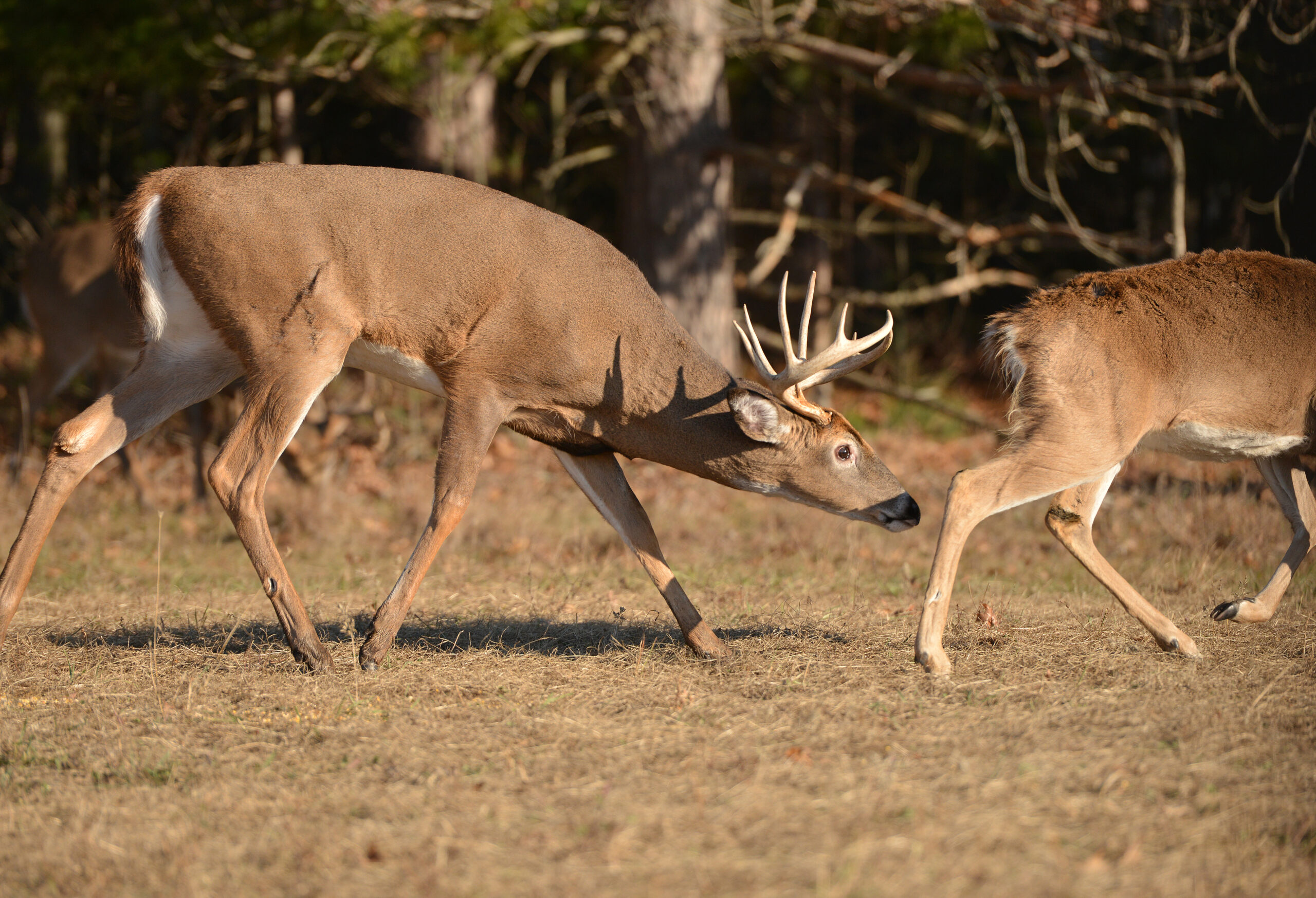Each year since 1992, Deer & Deer Hunting has provided both Southern and Northern readers with the “Whitetail Rut-Predictor.” This system has been featured in several D&DH articles by late contributing editor Charles J. Alsheimer.
The Whitetail Rut-Predictor is also included in our annual wall calendar, which still features Alsheimer’s photography. The predictor lets you plan when, where and how to hunt.
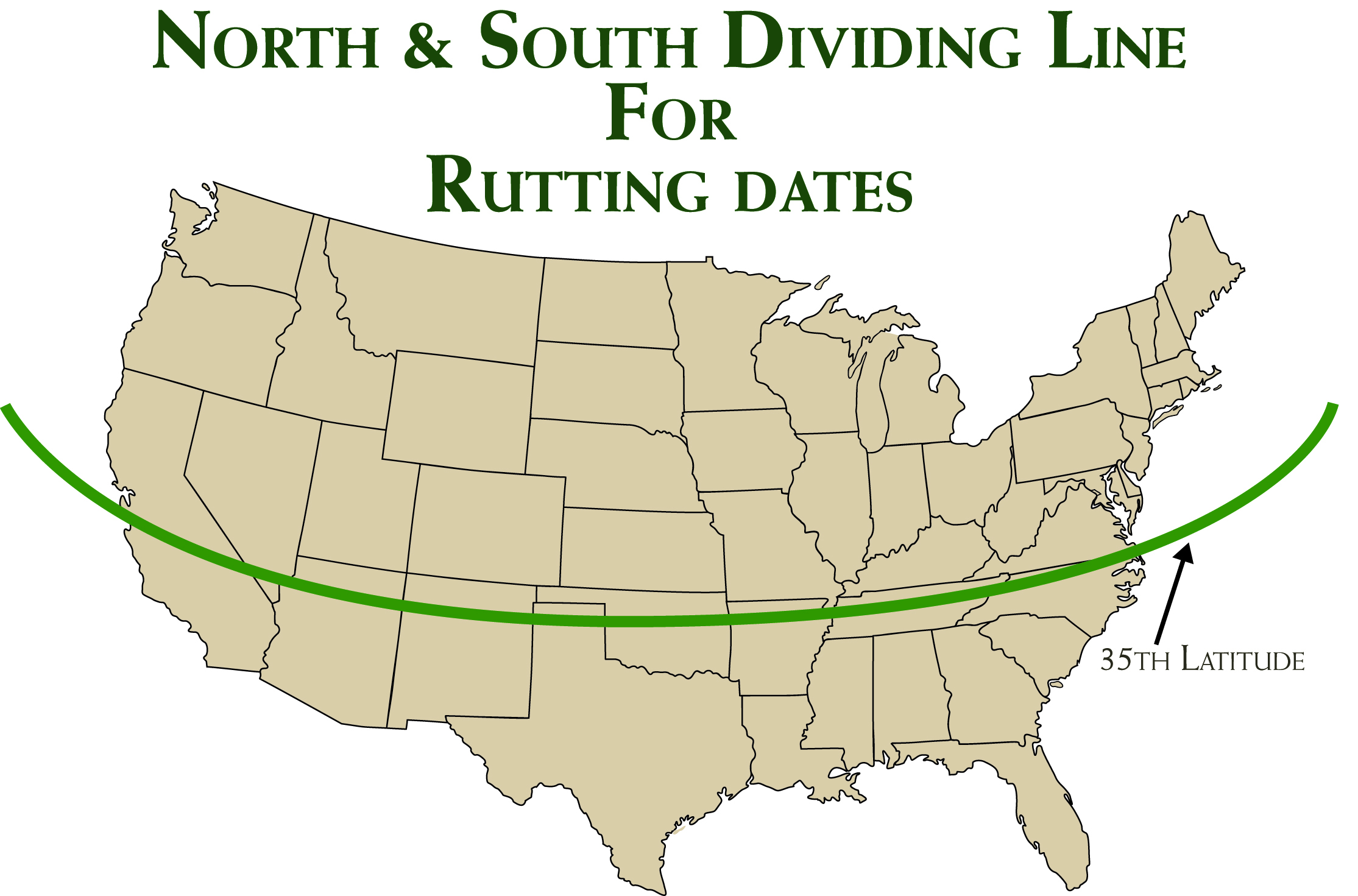
The rut follows predictable stages of deer behavior. These changes dictate the effectiveness of hunting strategies. Scrape-hunting, for example, might be effective when bucks seek does, but it won’t work later in the rut when most does are already bred or being tended.
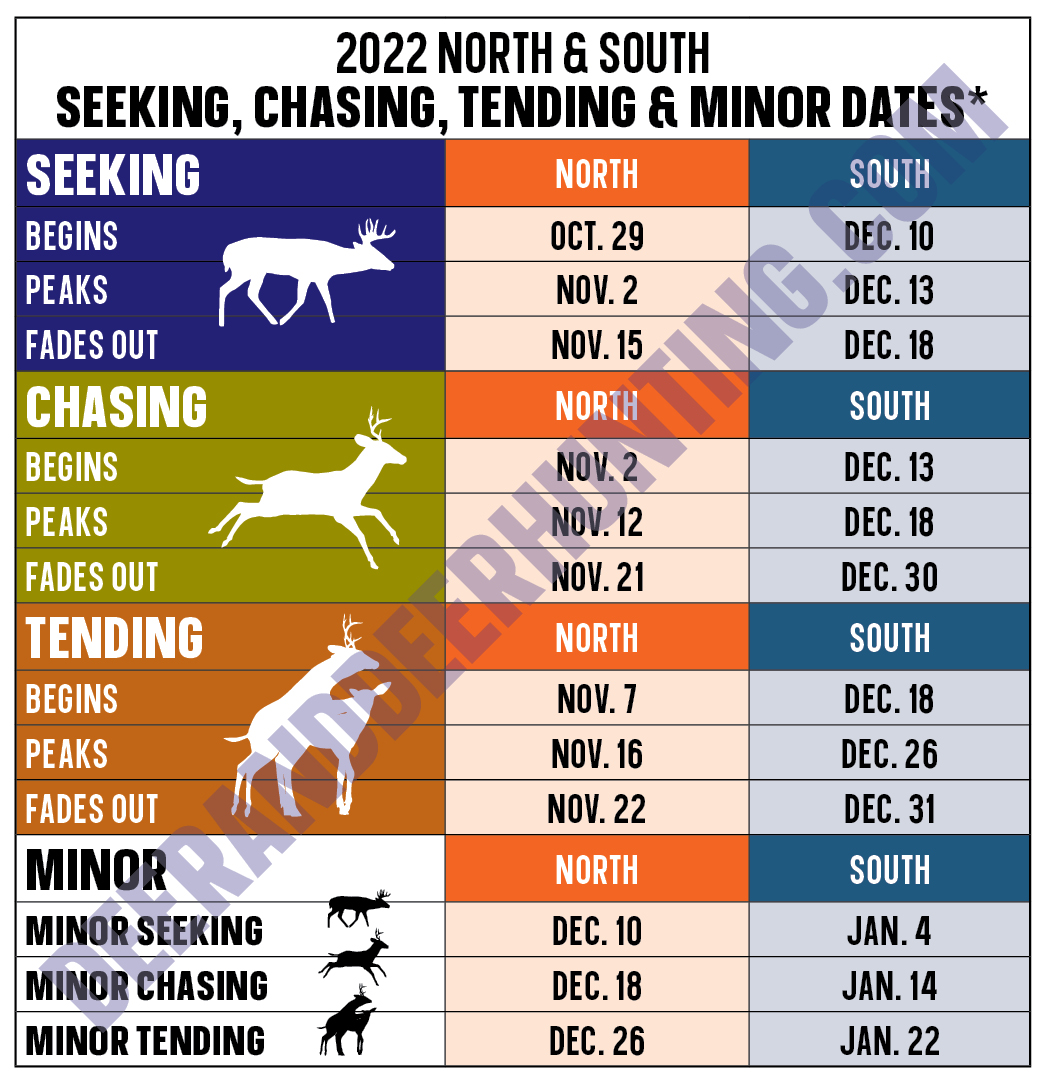
Not every buck exhibits the predicted primary behavior on a given date. Several factors, including age, nutrition, health and genetics, can affect the time and extent to which bucks exhibit a behavior. The Whitetail Rut-Predictor represents peaks in the activities (orange and blue symbols) and “minors” of secondary activity (black symbols).
The primary rut behaviors predicted in this calendar are “seeking,” “chasing” and “tending.” Feeding is a buck’s primary pre-rut activity. To take advantage of this, place stands near deer travel routes and feeding areas.
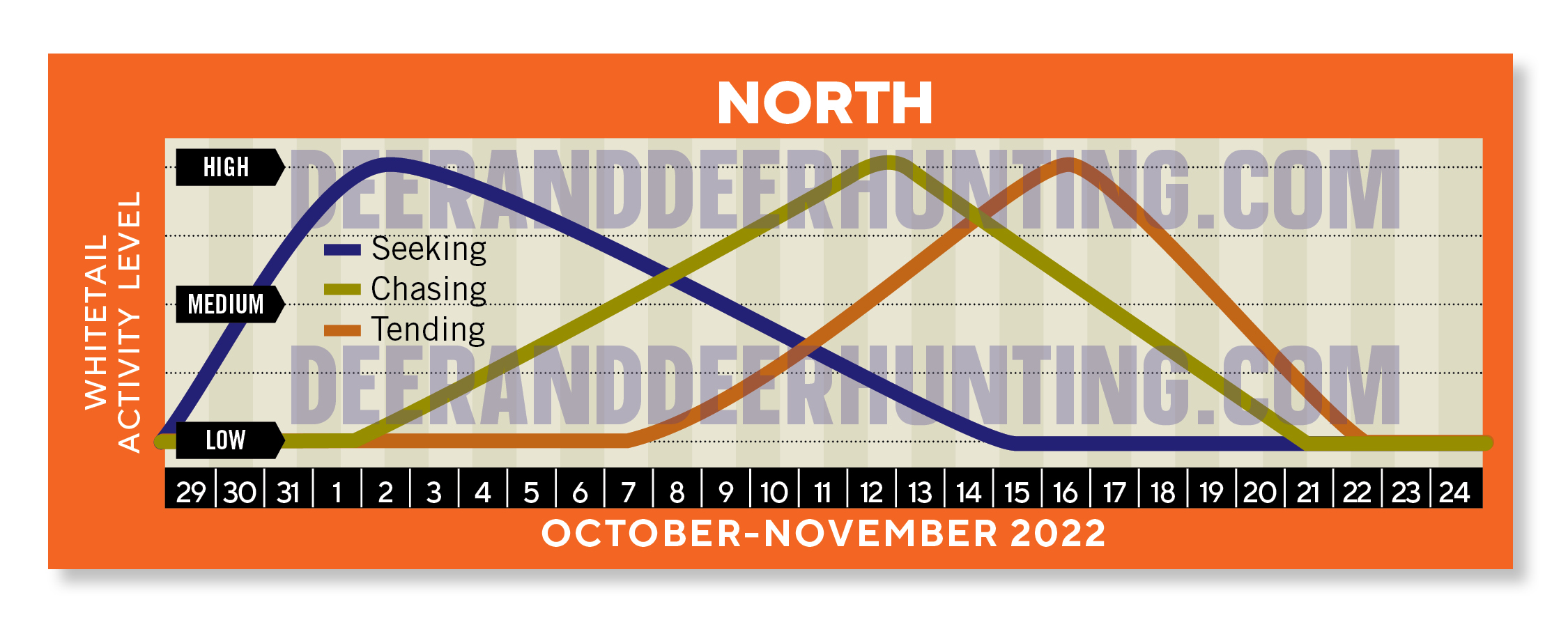
The top chart predicts the 2022 rutting intensity for the North. It’s important to note that the seeking, chasing and tending lines do not work independently of each other. Rather, they work together and should be viewed as one blending into the next as the rut progresses. The chart below predicts the South’s 2022 rutting activity.
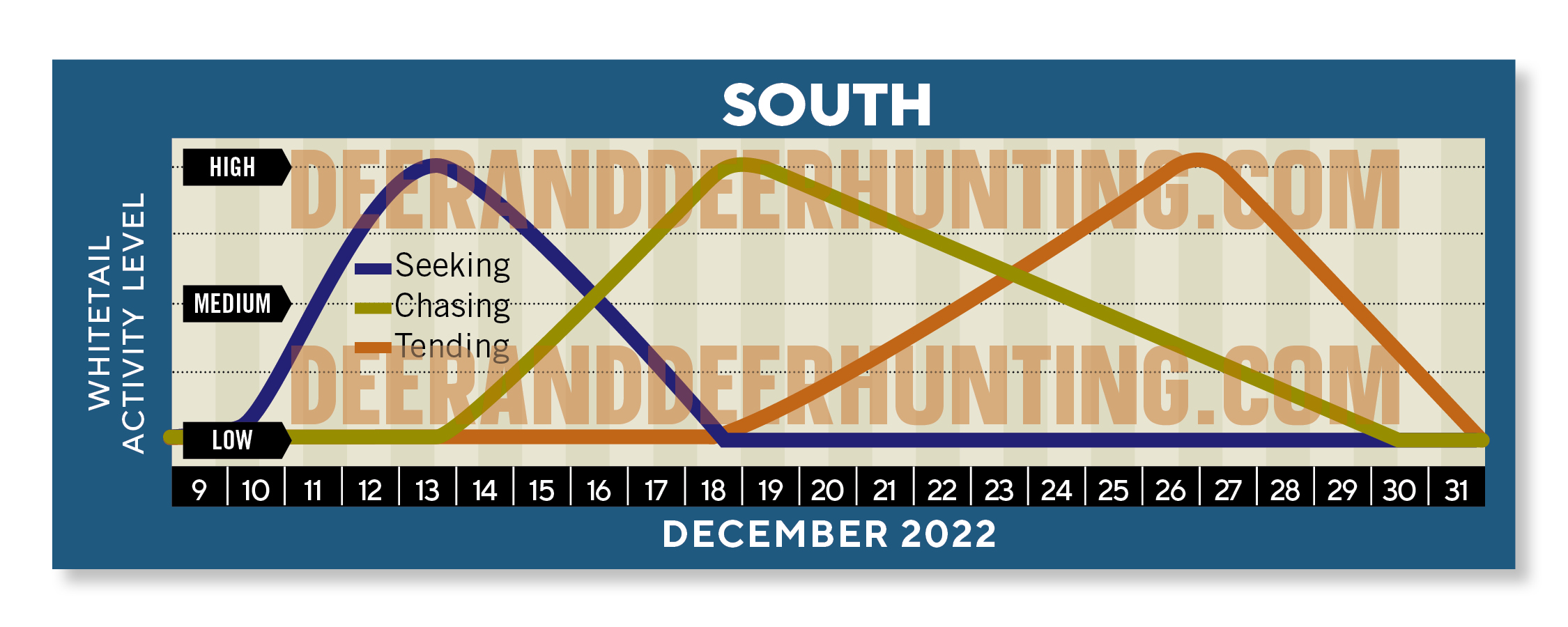
Seeking Behavior
The onset of each rut period is marked by a sudden increase in buck activity as bucks seek does. The trigger is not exactly known, but it might be a chemical signal from does approaching estrus.
Intense seeking activity makes for great stand-hunting. Bucks in this mode are also vulnerable to calling, rattling, scents and decoys. These bucks will often skirt the edges of swamps and forest transitions.
Chasing Behavior
Chasing begins when a buck locates a doe near estrus. As the buck approaches, the doe runs, but not in all-out flight. She soon slows or pauses to look back for the buck, which won’t seek other does, and continues in pursuit. The buck occasionally catches up and tries to corner the doe. This can result in a long chase that continues until the doe lets the buck accompany her.
Stand- and still-hunting in a near-estrous doe’s home range can be productive, because several bucks could enter the chase.
Tending Behavior
After a doe allows a buck to accompany her, tending begins. He beds and moves with the doe until she is bred. Tending, which ends abruptly, usually lasts about 24 hours. After the doe is bred, the buck again seeks other does and the cycle resumes.
Tracking can be effective for hunting a buck tending a doe. Bucks also respond to grunt calls, because they seek to drive off other bucks. However, don’t expect a buck to go far from a hot doe to visit scrapes and scents.
Contributing Factors
Bucks in healthy herds with a balanced sex and age structure have well-defined social orders. In herds in which bucks reach 5-plus years of age, dominant bucks do most of the breeding. As the herd’s age structure is skewed toward young bucks, the youngsters become increasingly involved in the rut and breeding. As the doe-to-buck ratio approaches 1:1, seeking behavior and interactions between bucks are maximized. As the doe-to-buck ratio skews toward does, bucks spend less time seeking because females are readily available.
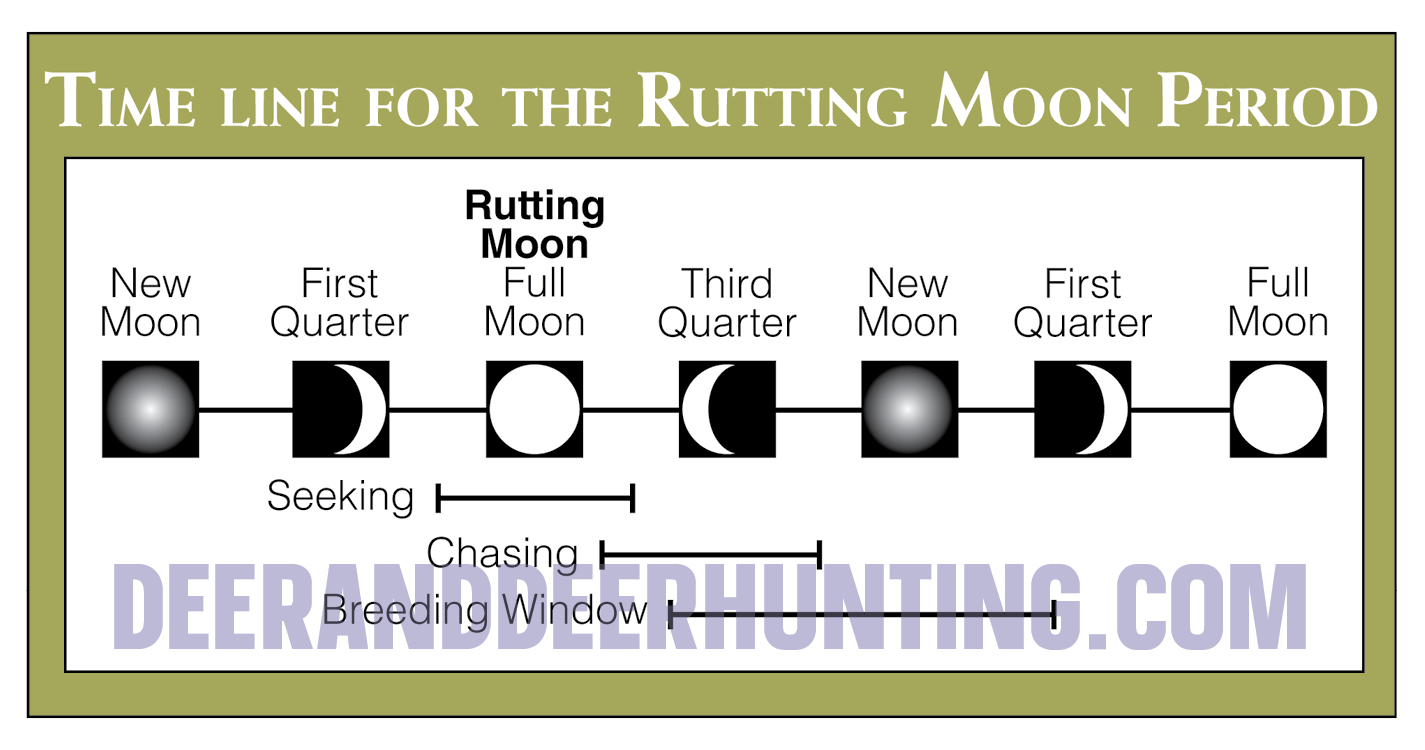
Seeking behavior begins abruptly and kicks off the rut about the time of the full moon, but not just any full moon, because day length is also involved. As chasing and tending increases, seeking behavior declines. Seeking can be expected any time during the rut when a buck finishes chasing or tending a doe. The peak of seeking occurs just before the peak of tending and breeding. Tending behavior and breeding peaks about the time of the new moon during the rut. The rut seems to end as quickly as it begins.
Effects of Latitude
The wobbling cycle of the Earth on its axis as it circles the sun causes seasonal changes by varying the amount of sunlight.
The link between diminishing day length and the rut’s onset is clear. However, it’s not simple. The breeding season is most intense and concentrated at Northern latitudes where the difference between day length in summer and winter is greatest. The breeding season lengthens the nearer deer live to the equator. This partly explains why the Southern rut appears more varied.
Effects of Weather
Activities on the Whitetail Rut-Predictor calendar might occur several days early because weather can affect daylight amounts. Dense clouds shorten day length 15 to 20 minutes, and decrease moonlight intensity. Rain and snow block sunlight and moonlight by defraction and diffusion, preventing moonlight from reaching the ground. Storms can shorten daylight about 30 minutes and obscure almost all moonlight.
Intense rutting activity is often associated with storm fronts in South Texas and other Southern states, but not in Northern states. This activity is often attributed to low air temperatures or barometric changes, but light likely plays a major role. Air temperatures exceeding 55 degrees Fahrenheit usually decrease deer activity.
The Predictor’s Basis
The Rut-Predictor is based on a model that links cyclical changes in the Earth’s solar and lunar illumination to the whitetail’s reproductive cycle. It is hypothesized that sunlight and moonlight provide environmental cues that set, trigger and synchronize breeding.
A computer model was developed that uses astronomical data, field observations of rutting activities and measurements of light intensity to predict rut activity.
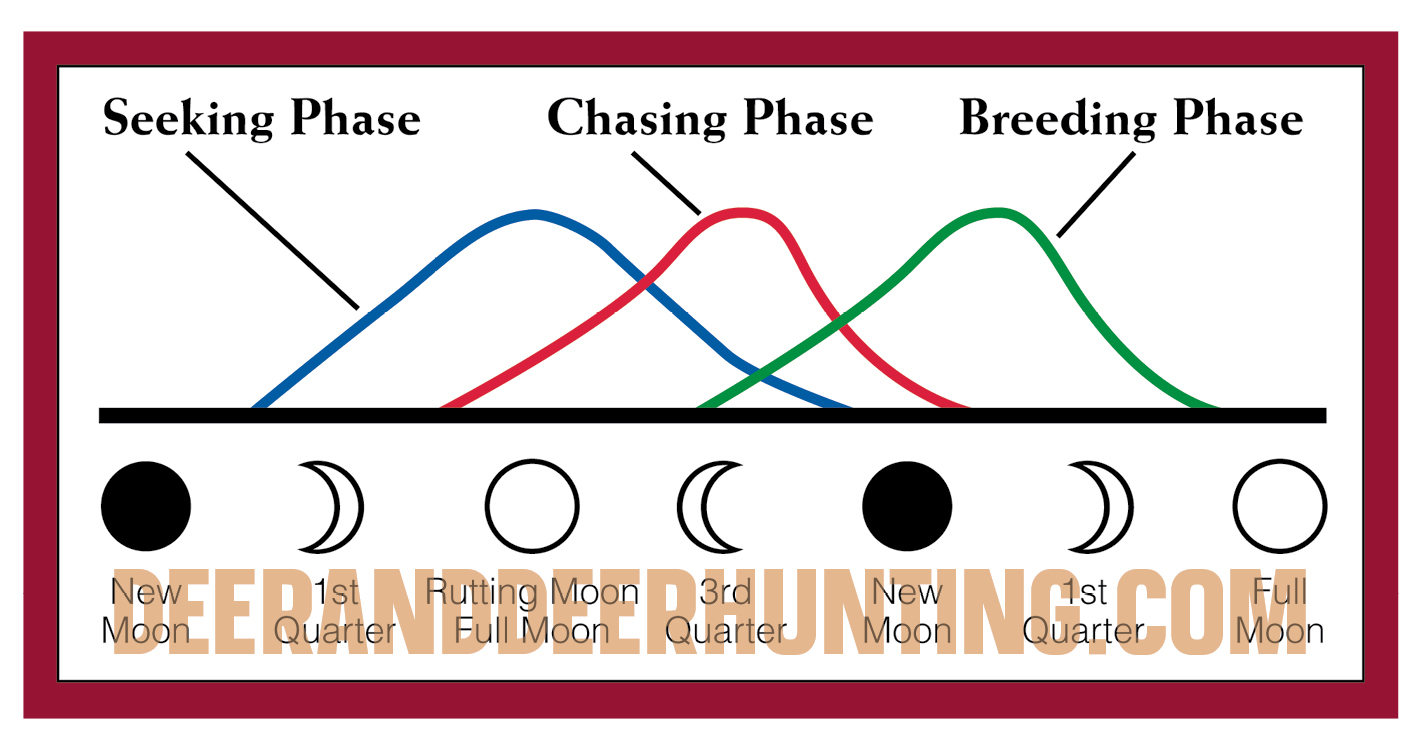
The Rut-Predictor hypothesis differs from conventional views. The general belief is that peak breeding north of the Mason-Dixon Line occurs each year about Nov. 15. However, it has been observed that rut activity often falls to nearly zero by mid-November. The timing of peak rut activity could vary year to year by as much as three weeks at any given location.
If the moon is the timing mechanism for the estrous cycle, what sensory pathway in deer receives the cue? External stimuli fall into three primary categories: physical, chemical and biological. The great distance between Earth and the moon rules out any regular 28-day exchange of sounds, scents, or chemical and biological materials deer can detect.
The moon affects the Earth’s gravitational fluctuations and nighttime illumination. Both factors create external stimuli that deer might detect. However, little evidence suggests deer or other creatures directly detect gravitational forces. Responses to those fluctuations are probably indirect. As a result, gravity’s effects were rejected as a stimulus for timing the whitetail’s estrous cycle.
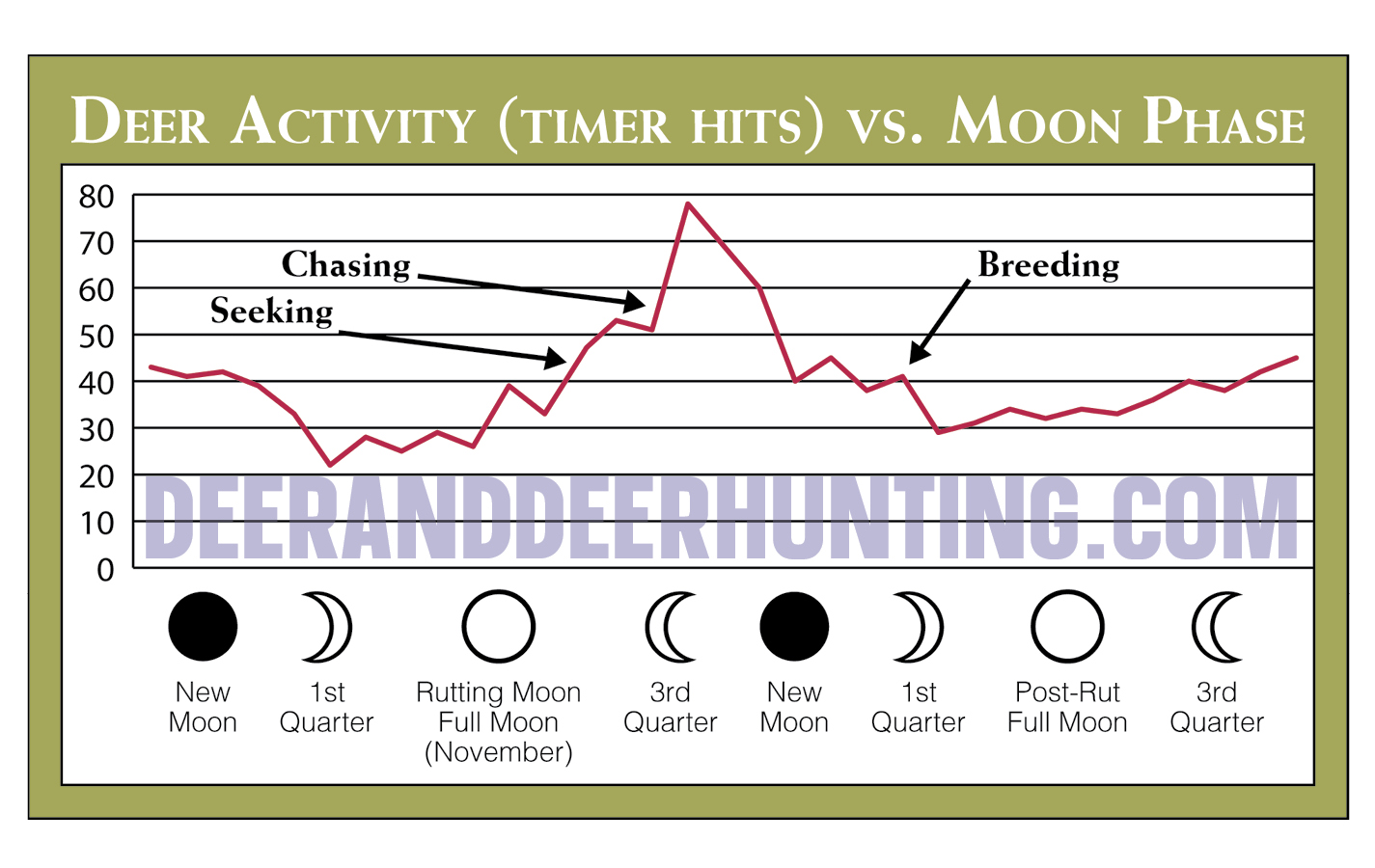
Moonlight can be detected, especially by whitetails, which have eyes adapted for low-light vision. Light passing into the eye strikes the nerve-rich area in the back of the eye, causing electrical impulses to pass along the nervous system to various organs. Some impulses pass to the pineal gland in the center of the brain, providing input to the endocrine system. The pineal gland and related hormones are involved in or regulate the reproductive cycle. The pineal gland responds to light by increasing (with diminishing light) or decreasing (with increasing light) production of a hormone called melatonin. This increases/decreases other hormones.
The fact that moonlight changes the Earth’s illumination on a cycle similar to the whitetail’s 28-day estrous cycle, the fact that whitetails have a sensory system that can detect moonlight, and the fact that the whitetail’s endocrine system responds to light stimuli by altering levels of reproductive hormones argue against coincidence.
Testing the Rut-Predictor
The Rut-Predictor has been well tested. For example, when whitetails from the United States have been brought to the Southern Hemisphere, where seasons are reversed, they shift from a November rut to a May rut. This is also reinforced by the fact whitetails in equatorial regions breed asynchronously throughout the year.
Alsheimer’s 20-plus years of work on this subject had him convinced that he was onto something.
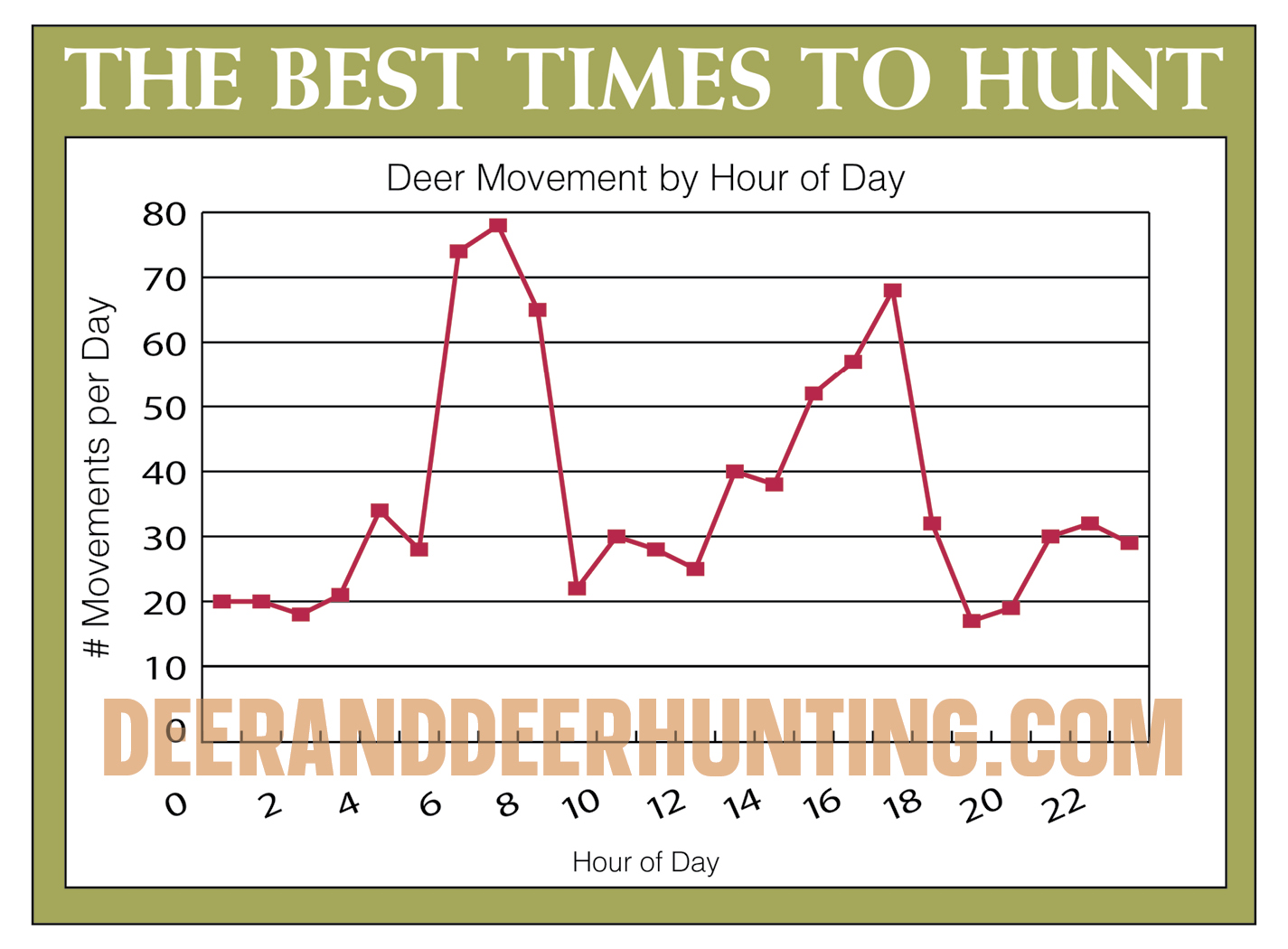
“Interestingly, the only way to disprove this theory is to witness behavior that contradicts it, such as seeing most does breed within seven days of a first quarter moon,” Alsheimer said. “Failure to observe predicted behavior, however, proves nothing, as it might be caused by unrelated factors, such as poor visibility, bad weather or low deer numbers.”
Conclusion
To help predict breeding behaviors for your area, keep a daily log of fresh rubs and scrapes you and your hunting partners observe. For added accuracy, quantify your effort by recording how many hours of hunting are associated with your counts.
— Editor’s note: It is important to note that peak tending (breeding) oftentimes occurs well after the peak rut activity that’s observed by hunters across North America.
D+DH In-Depth is our premium, comprehensive corner on America’s No. 1 game animal. In this graduate-level course, we’ll teach you about deer biology, behavior, and ultimately, how to become a better hunter. Want to be the first to get our premium content? Become a D+DH Insider for FREE!

